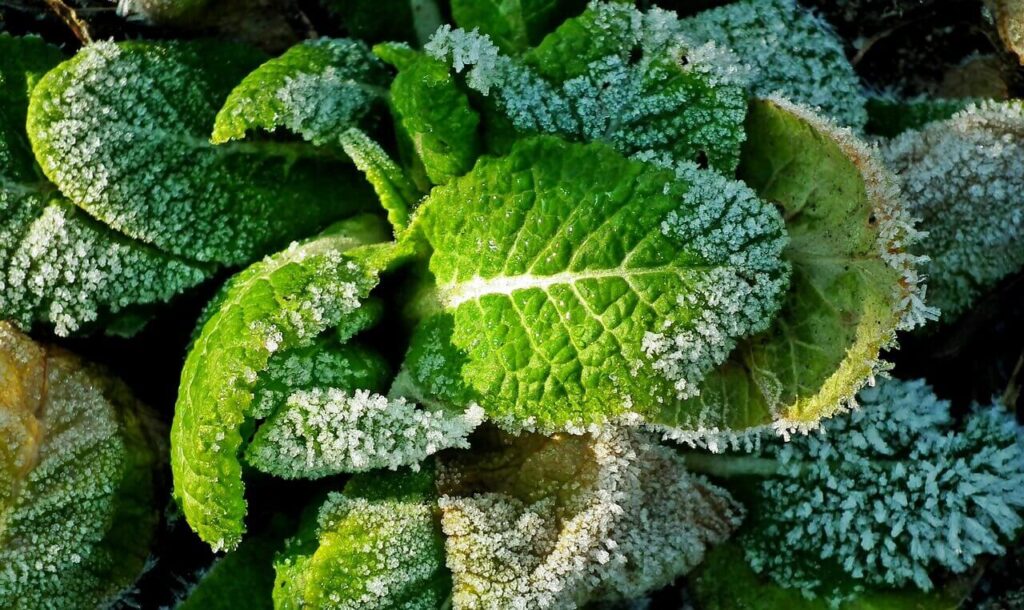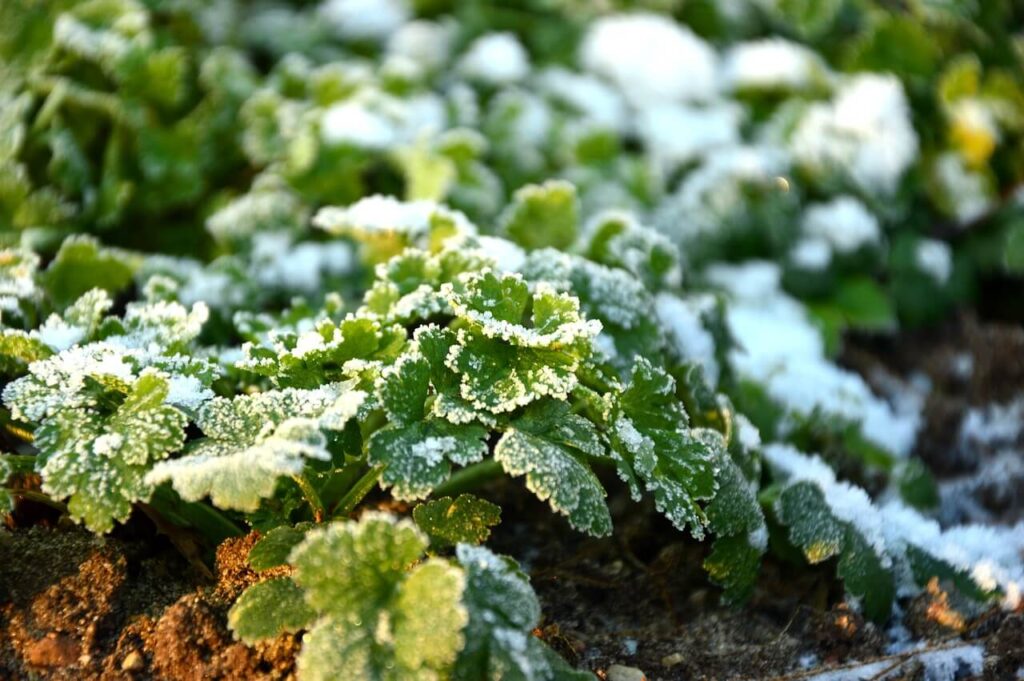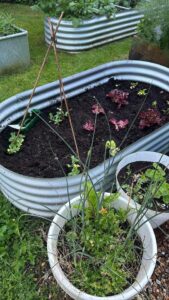A simple guide on how to keep plants alive during chillier months
The recent cold snap which followed record rainfall, reminds us that winter is the most difficult season to contend with in the garden.
From inundation to solid ground in 24 hours, it can be hard to know what, if anything, you can be doing outside to protect your plants. The reality is that most of the time it’s best to leave things alone, which is hard for keen gardeners. A few hours in the garden is the ideal antidote to dark days and post-Christmas blues and yet it’s probably counter-productive for your plants! Instead, it’s best to focus on supporting your green space in surviving the ravages of cold temperatures and waterlogging.
The job is getting harder too. The seasons seem to be shifting, and climate change is creating warmer autumns and a delayed onset of true winter. Whilst colder, late autumn tends to see less hard frosts but, when they come, they continue well into traditional spring. The old wives adage of ‘Ne’er cast clout ’til May is out’ seems to be coming of age again; in essence, there’s a risk of frost as late as the end of May.
The impacts of these changing seasons are that peaks and troughs are becoming higher, deeper, and more extreme. This can be confusing for plants and puts them at greater risk. In autumn, it’s not unusual to see plants that would normally only flower just once a year now heading into second flowering or throwing new buds just as frosts arrive. This new, delicate growth is what poses the greatest threat to plants. If you’ve lost plants to frost, or you’re worried about how to protect the garden, here are some ideas to help protect them.

How to make your garden more frost-ready
There are several things you can do to build in some natural frost resilience to the garden. These are general gardening ideas and not specific to individual plants, but they should help provide a first line of defence against frost.
- Select hardy varieties – the UK horticulture industry has become good at cultivating species to cope with the local climate. Seek these out first. There’s even a grower in the Southwest that has developed cultivars of Bougainvillea for the UK. This beautiful, lace-petalled climber is normally the preserve of the Mediterranean, and anyone who’s tried growing one in the UK will know it’s hard, almost impossible, even in the slightly more tropical climbs of the Cornish Riviera. But choosing a species that has been grown and developed here in the UK means you stand more chance of it surviving.
- Grow what works locally – take a wander around the area and look at what is established in other gardens as this can be a good indicator of what works. Every region of the UK has its own microclimate and understanding this will help you produce the healthiest, hardiest plants with strong growth and big blooms.
- Allow grass to grow longer – once you’ve scarified and fed the lawn in the autumn and applied some top dressing, be careful not to cut it too short. Raise the cutting height a little and allow some growth. And remember, don’t walk on frozen grass – you literally snap the blades.
- Avoid cutting back too hard – leave some sacrificial growth on plants that you can almost surrender to frost, without affecting the core of the plants, or most importantly the root system.
- Mulch – a really simple way of protecting plants is to mulch them. This effectively lays a natural blanket over the ground around their roots and stops the soil from being exposed to the cold. We’ve got a Winter Mulch designed specifically for this job. You can supplement this with leaf mulch if you’re wondering what to do with your leaf fall. Just run your mower over the leaves to chop and collect them and then spread this loosely over beds to create a natural mulch that will break down by the spring but protect the soil during the winter.
What plants need frost protection?
There’s no definitive list of plants that need protection, versus those that typically survive. We’ve all heard or seen horror stories where beautiful plants, that have always done well over winter, die – seemingly without reason. With changing seasons and temperature extremes there’s no longer a guarantee that something that did well last year, will be fine this year. There are, however, some good rules of thumb that still seem to hold:
- Tropical – it probably goes without saying that if something is of tropical descent, then it’s likely to need protection in the UK. Even the bougainvillea’s noted above that have been created for our climate, require a degree of protection.
- Corms/tubers – any bulbs that sit quite high in the soil can be at risk of frost. Where daffodils and tulips tend to sit deeper in the ground and need the cold as a catalyst, tubers and corms like Dahlias are best lifted and stored.
- Delicate plants – plants with very delicate features such as acers and Japanese maples will need protecting. The extremities of their growth, even if it’s not new, are prone to frost burn.
- Pots – anything growing in a pot is at greater risk because their root systems are more exposed to the cold. The recent extremely wet weather, followed by a cold snap is the worst combination for pots. The pots retain the water which then freezes.

Top 10 ways to protect plants from frost
Once you’ve added some general protection to the garden with our ideas above, there are then some more localised methods of providing frost protection to specific plants. Here are our top 10 ideas for ways to protect plants from frost:
- Lifting and storing – tubers and corms like Dahlias should be lifted in the autumn and stored, in pots in the greenhouse/shed, for the winter.
- Fleecing – use fleece bags with drawstring closures or wrap fleece around your plant to snuggle them up in their own blanket.
- Cloche – place a glass or clear plastic cloche over the top of a plant so that it can continue to enjoy the winter sun whilst trapping warm air around the plant and keeping cold air out.
- Gather and wrap – big structural plants such as Canarian Palms are most at risk of water getting into the heart of the plant and then freezing. Where possible, gather the branches up to create a cone and then wrap the plant – ideally from November to Easter. Not only will this protect the plant but the heat it creates at the heart will mean it continues growing, presenting new palms when you unwrap it.
- Straw and mulch around the base/roots – adding a loose layer of woodland mulch, winter mulch (to feed), leaf mulch or even straw around the base of plants will help to protect the stem and roots of the plants, often the most precious elements.
- Bring inside – if you’ve got pots and have a conservatory or orangery that continues to allow lots of light in but does not get too hot, you could move plants indoors. If you intend to do this, bring plants in gradually, moving them indoors overnight only during the autumn and then fully inside by December.
- Cold frame – if all you want to do is protect from frost then a cold frame will do the trick. Most plants will be hardy even in sub-zero temperatures, but it’s the moisture and the frost that can cause the damage. Using a cold frame protects the air environment immediately around the plant.
- Greenhouse (heated) – if you need to maintain a constant temperature for plants but indoors is too warm, you can get simple greenhouse heaters that run off electricity and only kick in at a defined temperature. The greenhouse continues to allow light in and gather warmth from winter sun but the heater provides that added injection of warm air on the coldest of nights.
- South-facing walls – bricks are a natural store for heat and so if you have a south-facing wall, plant against it or move pots next to it. The overhang of eaves and the fact that bricks will absorb heat during the day and then gradually release it overnight can create a very localised temperature which is one or two degrees higher – sometimes just enough to make a difference.
- Bark chip – once you’ve topped up your beds with compost or mulch, spread the bark chip over the top. As well as being a natural suppressant, it will provide an extra layer above the soil to help avoid the extremes or air temperature whilst retaining soil temperature below.




